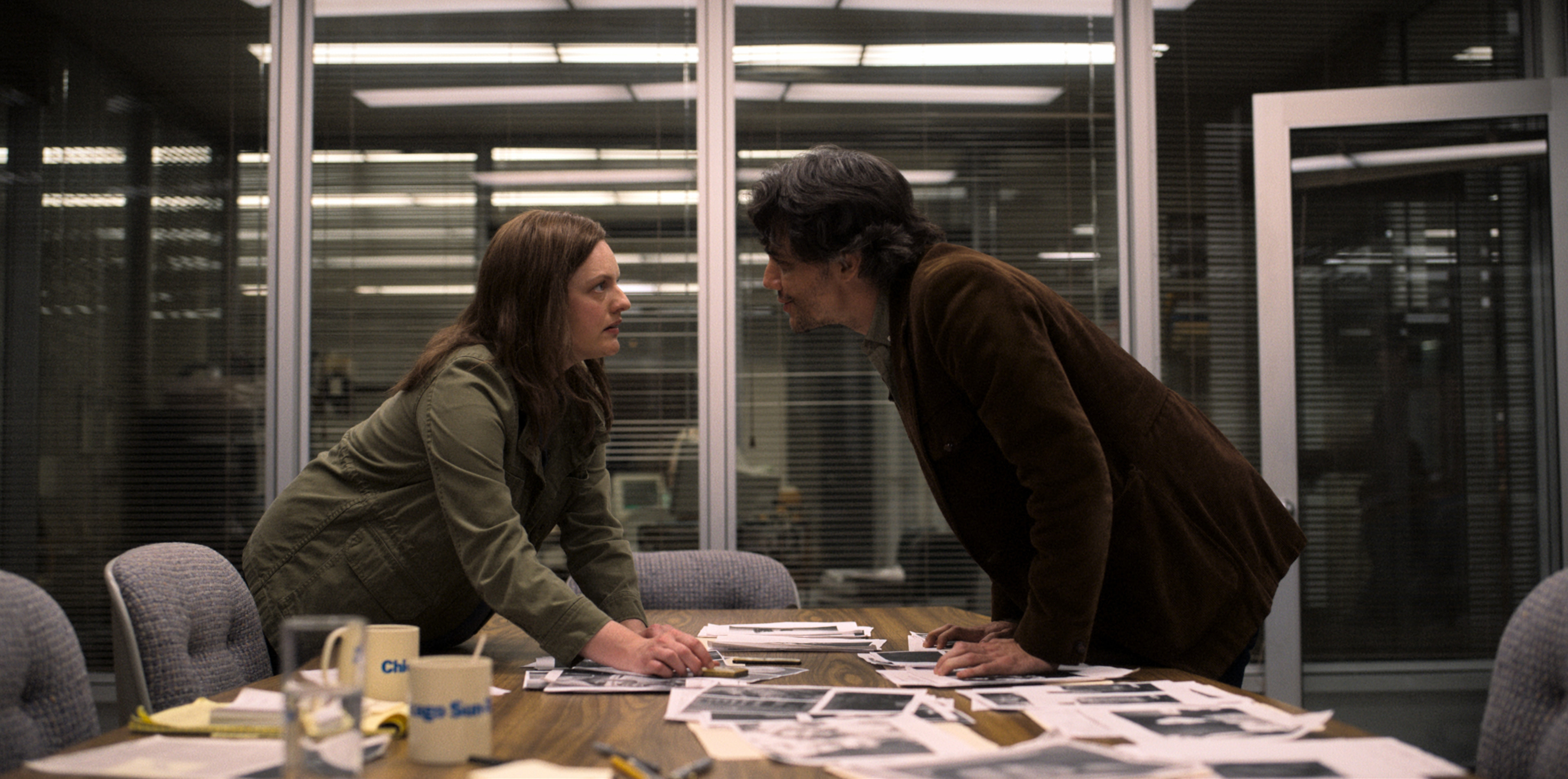Elisabeth Moss on capturing Kirby's intensity for Shining Girls
The actor reveals how producing and directing the Apple TV Plus thriller added depth to her performance

Elisabeth Moss is adept at playing intense characters, from Mad Men’s dogged Peggy Olson to Invisible Man’s Cecelia Kass to The Handmaid’s Tale’s fiery June Osborn. She seems to thrive by portraying challenging, determined women onscreen who strive to overcome some form of trauma. And that’s why she’s the perfect fit to lead the ’90s-set Apple TV+ thriller Shining Girls.
Moss plays Kirby Mazrachi, a newspaper archivist who teams up with investigative reporter Dan Velazquez (Wagner Moura) to hunt down a time-traveling serial killer. See, several years ago, Kirby was attacked by Harper (Jamie Bell), but survived the assault only to realize her reality keeps shifting, from her hairstyle to her relationship status. One minute she has a pet cat, the next it’s a dog, and it only gets worse from there. Kirby starts out as shy and isolated, but eventually becomes determined to hunt down Harper and help Jenny (Phillipa Soo), another Harper victim.
While the show deepens the mystery of how Harper darts through time to track his prey, Moss delivers a powerful performance. But she isn’t just merely the show’s star: She’s also an executive producer and directed multiple episodes. Moss recently spoke with the The A.V. Club about that triple-threat status and how it served her on Shining Girls.
The A.V. Club: You read the script for Shining Girls a couple of years before going into production because of the pandemic. How did the additional time help develop your approach for Kirby’s journey?
Elisabeth Moss: Yeah, most times when you’re reading a script, you get to work on it immediately a month later or maybe three months later. I actually first read Shining Girls almost three years earlier. It did allow me to sit with the script for a long time. Not just Kirby as a character, but for the show as a co-producer, I got to spend time with questions like “What’s the tone of the show?” or “What are the visuals going to be like?” It all becomes incredibly familiar. There were so many discussions about what our home would be, which ended up being Apple TV+. We had conversations with them through which we learned more about the show, and then while hiring the crew, like with production designers, we got to focus in-depth on the look of it all. That’s what really helped.
AVC: So did working on all of these factors help you get into Kirby’s troubled mindset at all?
EM: The thing is, this is why I like being a producer and director because I’m not good at research or thinking about the character or planning ahead. I’m very instinctive. I don’t do a lot of work on the character itself necessarily. What I like to do—and what I’ve always done as an actor, even before I even began producing or directing—is approach it the way I’ve now learned is how a director approaches it. I like to talk to the writer about every single scene. I think about the tone and how the scene will look overall with the sets or locations. Through all of that, I end up having all kinds of thoughts on my character, without me journaling as Kirby or something like that. That’s just stuff I can’t do. I end up thinking about who I’m playing in a roundabout way now. When I arrive actually having to play her, I’ve had all these thoughts about Kirby that I didn’t even realize I was having. I hope that makes sense.
AVC: It does. Talking about you as a director here, Shining Girls’ sleight of hand while showing Kirby’s reality shifting so often happens very seamlessly. How was this experience different from directing an episode of The Handmaid’s Tale?
EM: The Handmaid’s Tale is so grounded. It was nice for me because I wasn’t getting into a whole world of visual effects that I’m not adept at. We have VFX on The Handmaid’s Tale but it’s not super sci-fi. The thing that was important to us with Shining Girls was that everything had to happen on camera. There was no morphing when her world changes. Everything had to be something that felt like Kirby was actually experiencing. That was set up so well by our first couple of directors Michelle McLaren and Daina Reed, so I just followed suit for my episodes after.
AVC: In Shining Girls, what’s the value of Kirby finding help through her bond with Dan, and how in turn, she is able to help Jenny understand everything that’s happening to her?
EM: Yes, Dan is the first person who believes Kirby and doesn’t think she’s crazy. That’s huge for her. It opens up a dam for her. If you don’t have an ally, you’re not going to make progress in moving past a traumatic experience like hers. She finally has somebody who thinks, “Not only do I believe you and think you’re not crazy, but I think it’s important we figure out what’s going on.” He has the same obsession as her to find and stop Harper. And then there’s only one other person, which is Jenny, who experiences the same thing as Kirby. She can actually talk to Jenny about those shared experiences because she survived Harper’s attack as well and her reality is now changing too. It’s also important to remember that when Kirby’s reality shifts, she remembers everything; she carries all the narratives with her while others don’t. So now, Dan, Jenny, and even Harper are the only people who understand her.
[Note: Keep an eye out for a season finale post-mortem interview with Moss and Moura on the site on June 3.]